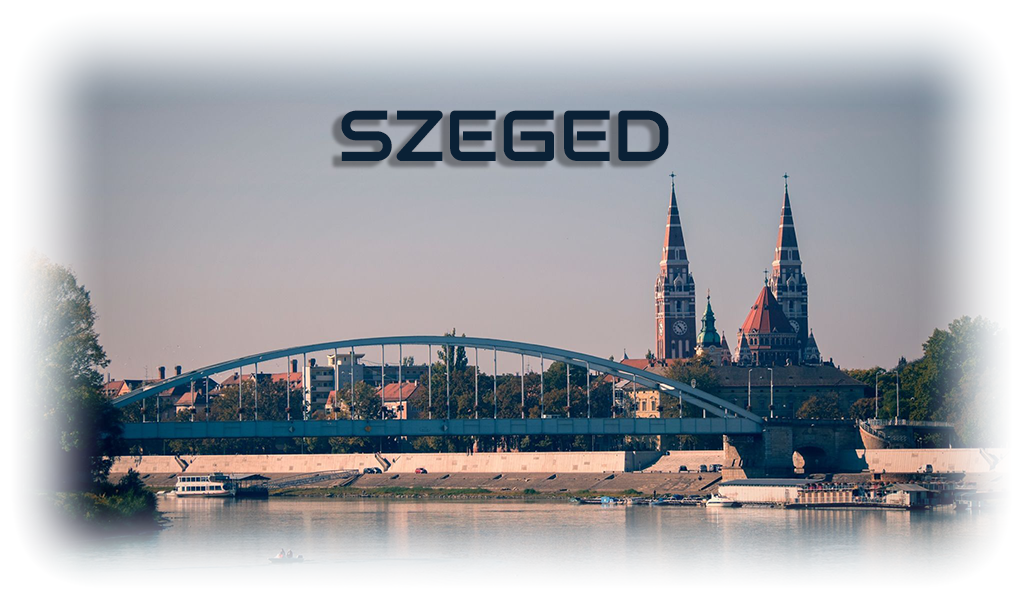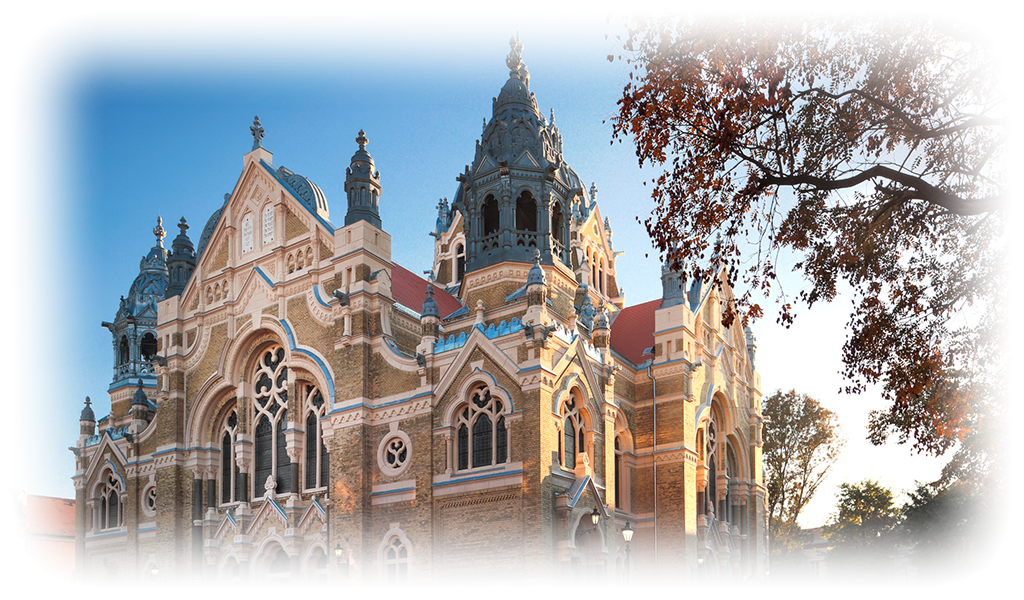
Szeged is a city in southern Hungary located on the banks of the Tisza River. It is the third largest city in the country, very interesting from a tourist point of view: interesting monuments and monuments of architecture, history and culture, as well as a special cozy atmosphere.
Geography and weather
Szeged is located in the continental climate with fairly hot summers and mild winters. The coldest month is January, the hottest are July and August. In winter, negative temperatures and snowfalls are possible. A distinctive feature of the climate is the large number of sunny days. In Hungary, Szeged is called the "city of sunlight."
History and interesting facts
Already in the days of the Roman Empire on the site of Szeged, at the intersection of roads connecting the two Roman provinces, there was a small settlement. There is also a version that the camp of Attila, the leader of the Huns, was nearby.
The first mention of the city of Szeged dates back to 1183. In the 13th century the city was almost completely destroyed during the Mongol-Tatar invasion. The inhabitants of the city hid from the invaders in the nearby swamps. After that, the city was rebuilt.
In the second half of the 13th century the city received the privileges of a royal fortress. 14-15 centuries become a turning point for the city. Szeged is becoming the largest city in southern Hungary, and the Turkish threat increases its strategic importance. In 1498 it became a free royal city. The first half of the 16th century was unsuccessful for the city.
Initially, Szeged was looted by the Turks, and 20 years later became part of the Ottoman Empire, which was part of for 150 years. In the second half of the 17th century the city was part of Austria-Hungary. In the 18th century Szeged grew and developed rapidly.
In the 19th century the city became a major industrial center. It should be noted that in 1879 there was a catastrophic flood, as a result of which it was almost completely washed away. The restoration of Szeged lasted several decades.
Geography and weather
Szeged is located in the continental climate with fairly hot summers and mild winters. The coldest month is January, the hottest are July and August. In winter, negative temperatures and snowfalls are possible. A distinctive feature of the climate is the large number of sunny days. In Hungary, Szeged is called the "city of sunlight."
History and interesting facts
Already in the days of the Roman Empire on the site of Szeged, at the intersection of roads connecting the two Roman provinces, there was a small settlement. There is also a version that the camp of Attila, the leader of the Huns, was nearby.
The first mention of the city of Szeged dates back to 1183. In the 13th century the city was almost completely destroyed during the Mongol-Tatar invasion. The inhabitants of the city hid from the invaders in the nearby swamps. After that, the city was rebuilt.
In the second half of the 13th century the city received the privileges of a royal fortress. 14-15 centuries become a turning point for the city. Szeged is becoming the largest city in southern Hungary, and the Turkish threat increases its strategic importance. In 1498 it became a free royal city. The first half of the 16th century was unsuccessful for the city.
Initially, Szeged was looted by the Turks, and 20 years later became part of the Ottoman Empire, which was part of for 150 years. In the second half of the 17th century the city was part of Austria-Hungary. In the 18th century Szeged grew and developed rapidly.
In the 19th century the city became a major industrial center. It should be noted that in 1879 there was a catastrophic flood, as a result of which it was almost completely washed away. The restoration of Szeged lasted several decades.

Food and drinks
Szeged offers traditional and Hungarian cuisine as well as restaurants serving European cuisine and fast food. On the banks of the Tisza you can find many fish restaurants with a cozy atmosphere, where you should definitely try the local soup. In the city itself you can also find a wide range of places to eat - from gourmet restaurants to small cafes with terraces. For lovers of fresh vegetables and fruits in Szeged there are markets. One of them is located on Mars Square (Mars téri piac).
Attractions
The Cathedral is one of the hallmarks of Szeged. This is a beautiful cathedral of the 30s of the 20th century, built of red brick in an eclectic style. Romanesque, Gothic and Byzantine motifs were mixed in the architecture of the cathedral. It is the fourth largest church in Hungary. Also here is one of the largest bodies. It is often called the Votive Church. Nearby is the tower of St. Demeter. It used to be the bell tower of an ancient cathedral of the 13th century, which was restored in the form of a tower after the floods in the 19th century.
The Franciscan Church and Monastery are one of the oldest buildings in Szeged, built in the 15th century in the Gothic style and miraculously survived the floods. The roots of the church and the monastery go back to the 12th century. The interior is made in the Baroque style.
The Synagogue was built in Szeged in the early 20th century. Is a beautiful building in an eclectic style.
Reformed Church has been built in the late 19th century after the flood. Beautiful building in the neo-Gothic style.
The Water Tower is an interesting engineering structure located on St. Istvan. Built in the early 20th century of reinforced concrete. It still performs its functions.
The Town Hall is a building built in the neo-baroque style in the late 19th century. The city authorities are sitting here.
The Count's Palace is an interesting Art Nouveau building of the early 20th century with a beautiful facade.
The Central Bridge, built in the late 19th century, connects both banks of the river Tisza.
Szeged offers traditional and Hungarian cuisine as well as restaurants serving European cuisine and fast food. On the banks of the Tisza you can find many fish restaurants with a cozy atmosphere, where you should definitely try the local soup. In the city itself you can also find a wide range of places to eat - from gourmet restaurants to small cafes with terraces. For lovers of fresh vegetables and fruits in Szeged there are markets. One of them is located on Mars Square (Mars téri piac).
Attractions
The Cathedral is one of the hallmarks of Szeged. This is a beautiful cathedral of the 30s of the 20th century, built of red brick in an eclectic style. Romanesque, Gothic and Byzantine motifs were mixed in the architecture of the cathedral. It is the fourth largest church in Hungary. Also here is one of the largest bodies. It is often called the Votive Church. Nearby is the tower of St. Demeter. It used to be the bell tower of an ancient cathedral of the 13th century, which was restored in the form of a tower after the floods in the 19th century.
The Franciscan Church and Monastery are one of the oldest buildings in Szeged, built in the 15th century in the Gothic style and miraculously survived the floods. The roots of the church and the monastery go back to the 12th century. The interior is made in the Baroque style.
The Synagogue was built in Szeged in the early 20th century. Is a beautiful building in an eclectic style.
Reformed Church has been built in the late 19th century after the flood. Beautiful building in the neo-Gothic style.
The Water Tower is an interesting engineering structure located on St. Istvan. Built in the early 20th century of reinforced concrete. It still performs its functions.
The Town Hall is a building built in the neo-baroque style in the late 19th century. The city authorities are sitting here.
The Count's Palace is an interesting Art Nouveau building of the early 20th century with a beautiful facade.
The Central Bridge, built in the late 19th century, connects both banks of the river Tisza.








